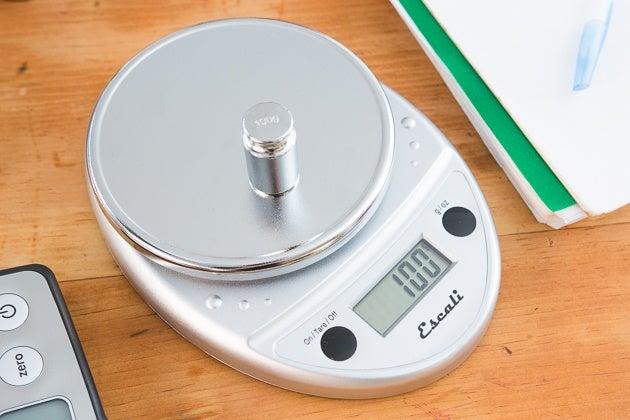Are you a firm believer in your trusty set of mechanical scales or are you dead set on digital? We recently tested nine digital kitchen scales and compared them with jug, balance and mechanical scales to see which is the most reliable set for measuring your ingredients.
We used a set of calibration weights to test their accuracy and see how little they could register, as well as how exact the measurements would be.
Find out which type came out on top, how easy each set of scales is to use and if it has any useful features.
Head to the best digital kitchen scales to see in-depth reviews of scales from Argos, John Lewis, Lakeland, Salter and more
Jug scales
Not a common find in your local kitchenware store, jug scales are less popular than their digital counterparts. They are, as the name suggests, a measuring jug with the addition of a digital display that can show the weight and volume of its contents.
In theory, it’s the perfect kitchen accessory – not only does it save space, but it also saves preparation time. But in practice, it’s not such a great solution.

While the jug scales we tested were the most accurate of the alternative types, there were still discrepancies of up to 25g in our tests. However, impressively they still managed to pick up small 2ml and 2g measurements.
If you decide to invest in a jug scale we’d recommend buying the largest one possible. This is because the shape and size of the jug determines what you can fit in there, unlike regular digital scales which you could rest just about anything on.
Balance scales
You’ll likely have seen a set of balance scales sitting pride of place on someone’s countertop, and it’s likely not because they’re using them to bake. Balance scales have become more of a decorative product in recent years and for good reason. They’re incredibly cumbersome and there are limits to their exactness.
They work by weighing a known weight against an unknown weight – once you’ve found a balance you’ll know what your ingredient weighs. However, the accuracy of your measurements depends on the range of weights you use with the scale.
We were surprised to find that they definitely registered 1g, but from then on it’s a guessing game as to how accurate they are.
Tips for living well – get our free Food & Health newsletter: shop savvy, eat well, stay healthy
Mechanical scales
This is another type of scale that requires a lot of eyeballing and offers little precision in return. The benefit of mechanical scales is that you can zero them, unlike balance scales, though you’ll have to do this manually.
The set we tested was easy to use and registered the weights we put on it, but their accuracy is difficult to determine. It rests on you judging where the hand is pointing so the better your eyesight, the more accurate the reading.
Digital scales
Digital kitchen scales are the most widely available and are a great option for accurate, easy to read measurements. Though this does depend on which set you buy.
Our testing found some scales with deviations of up to 10g and 20ml, which is enough to ruin a recipe. We tested scales ranging in price from £7 to £50 from Argos, Salter and more to find the most accurate, consistent, and easy to use.
You’ll find that the best digital scales will offer more in terms of extra functions than alternative scales. Some of the sets we tested had timers and even ambient thermometers – handy for making bread and general baking.
Our verdict
For both ease of use and accuracy, we’d recommend always going for a set of digital kitchen scales. You can fit just about anything on top of a digital scale and can instantly get a reading.
Even the worst-performing digital scale was still more accurate overall than the best alternative scale we tested, which was the jug scale.
If you’re still not convinced to go digital then your best bet is a jug scale. It’s convenient, easy to use and the one we tested picked up a minute amount. But we did find larger discrepancies the more weight and the more volume we added.
